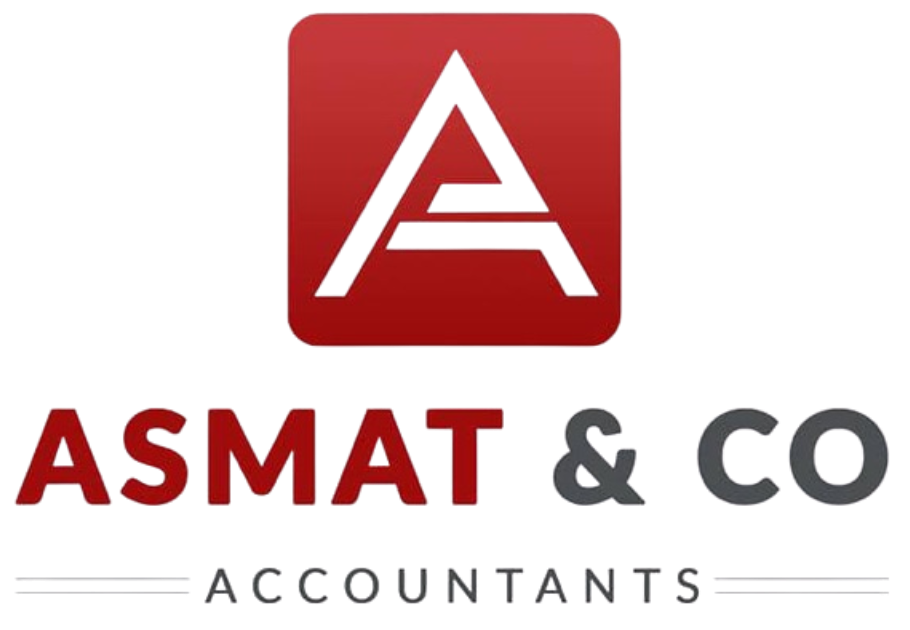How can Registering VAT affect my Price
Before diving into the setup process, it’s crucial to understand what a buy-to-let company is. Essentially, it’s a business entity created to purchase, own, and manage rental properties. This structure can offer tax benefits and liability protection compared to owning properties personally.
Defining a Buy-to-Let Company

A buy-to-let company is specifically designed for purchasing and managing properties intended for rental. Unlike personal property ownership, this company acts as a separate legal entity. This separation can be beneficial for tax purposes and for limiting personal liability. It’s important to understand that while this setup offers advantages, it also comes with its own set of responsibilities and regulations.
Key Features of a Buy-to-Let Company
Buy-to-let companies often enjoy benefits such as the ability to offset mortgage interest against rental income, which isn’t available to individual landlords. Moreover, companies can take advantage of specific tax reliefs. Furthermore, having a structured business approach allows for more systematic property management, from acquisition to tenant management.
Legal and Financial Considerations
When setting up a buy-to-let company, it’s vital to be aware of legal requirements, such as registration and compliance with local property laws. Financially, understanding the tax implications and accounting standards for a company structure is crucial. Seeking professional advice from accountants and legal experts can ensure that all aspects are covered, allowing you to focus on growing your property portfolio.
Benefits of a Buy-to-Let Company
- Tax Efficiency: Profits can be reinvested into the company, potentially reducing personal tax liabilities.
- Limited Liability: Protects personal assets from business debts and liabilities.
- Professional Image: Operating as a company can enhance credibility with lenders and tenants.
Tax Efficiency
Operating through a buy-to-let company can provide significant tax advantages. Companies are often taxed at a lower rate than individuals, and you can reinvest profits back into the business, potentially deferring personal tax liabilities. Additionally, companies can offset expenses against income, reducing taxable profits and allowing for strategic financial planning.
Limited Liability
One of the primary benefits of a buy-to-let company is the protection it offers personal assets. As a separate legal entity, the company holds the liability, not the individual owners. This means that if the business encounters financial difficulties, your personal assets remain protected, offering peace of mind and financial security.
Professional Image
Operating as a company can enhance your credibility. Lenders and potential tenants may view a company structure as more stable and reliable than individual ownership. This professional image can open doors to better financing options and attract higher-quality tenants, contributing to the overall success of your venture.
Steps to Set Up a Buy-to-Let Company
Let’s explore the essential steps to establish your buy-to-let company effectively.
Step 1: Research and Planning
Before you begin, conduct thorough research on the real estate market and rental property business. Understanding market trends, property values, and rental demand in your area is crucial.
Market Analysis
Begin with a comprehensive market analysis to understand the dynamics of the real estate market in your target area. Identify which types of properties are in high demand and where the most lucrative opportunities lie. Analyze local economic conditions, employment rates, and population demographics to forecast potential rental demand and property appreciation.
Financial Planning
Developing a robust financial plan is a cornerstone of your business strategy. Calculate your budget meticulously, considering purchase costs, renovation expenses, and potential rental income. Factor in ongoing expenses such as property management fees, insurance, and maintenance costs. A detailed financial plan will guide your investment decisions and ensure long-term profitability.
Risk Assessment
Conducting a risk assessment is vital to anticipate potential challenges and devise mitigation strategies. Consider market volatility, interest rate fluctuations, and potential vacancies. Prepare contingency plans to address these risks, ensuring your business remains resilient in the face of uncertainties.
Step 2: Choose the Right Business Structure
Deciding on the appropriate business structure is essential for legal and financial purposes. Most buy-to-let businesses are set up as limited companies.
Limited Company
A limited company is the most popular structure for buy-to-let ventures due to its tax advantages and limited liability protection. This structure separates personal finances from business operations, providing a clear legal distinction. It also allows for greater flexibility in profit distribution and reinvestment strategies.
Partnership
For those considering a collaborative approach, a partnership might be suitable. This structure involves two or more individuals sharing ownership and responsibilities. While partnerships offer flexibility and shared decision-making, they also come with shared liabilities, making clear partnership agreements essential.
Sole Trader
Operating as a sole trader is the simplest setup but offers fewer protections and tax benefits. As a sole trader, you are personally liable for business debts, which can pose significant financial risks. This structure might be suitable for small-scale operations but is generally not recommended for larger property portfolios.
Legal and Tax Implications
Each business structure comes with distinct legal and tax implications. Understanding these nuances is crucial for making informed decisions. Consulting with legal and financial professionals can provide clarity and ensure compliance with all regulatory requirements, setting a solid foundation for your company.
Step 3: Register Your Company
Once you’ve chosen your business structure, register your company with the appropriate authorities. In the UK, this involves registering with Companies House.
Company Name
Selecting a unique and memorable name for your company is an important branding step. Ensure the name aligns with your business vision and is available for registration. A well-chosen name can enhance your brand’s identity and make a lasting impression on clients and partners.
Articles of Association
Prepare the Articles of Association, a legal document outlining the company’s structure, purpose, and operational guidelines. This document is crucial for establishing the rules governing the company’s management and decision-making processes. Ensure it aligns with your business objectives and complies with legal standards.
Directors and Shareholders
Appoint directors and allocate shares to shareholders, establishing the company’s governance structure. Define roles and responsibilities clearly to ensure effective management and accountability. Consider involving experienced individuals who can contribute valuable insights and expertise to your business.
Compliance and Filing
Ensure compliance with all registration requirements and filing obligations. This includes submitting necessary forms and documents to the relevant authorities. Staying up-to-date with compliance ensures legal protection and maintains the company’s good standing.
Step 4: Open a Business Bank Account
Separating your personal and business finances is crucial for accurate financial management. Opening a dedicated business bank account allows you to track income and expenses efficiently.
Compare Options
Research different banks to find the best business account for your needs. Consider factors such as fees, transaction limits, and additional services like online banking and financial advice. Choosing the right bank can streamline your financial operations and support your business’s growth.
Documents Required
Prepare the necessary documents for opening a business bank account, including your company registration certificate and identification. Having all required paperwork in order ensures a smooth account setup process. Be prepared to provide additional documentation if requested by the bank.
Financial Management
Utilize your business account for all financial transactions related to your buy-to-let company. This separation simplifies accounting and provides a clear overview of your financial health. Regularly monitor your account to manage cash flow effectively and make informed financial decisions.
Building a Relationship with Your Bank
Establish a positive relationship with your bank, as they can be valuable partners in your business journey. Regularly communicate your financial needs and explore additional services they may offer. A strong banking relationship can provide access to financing options and tailored financial advice.
Step 5: Secure Financing
Funding your buy-to-let company is a critical step. You’ll need capital to purchase properties, cover renovation costs, and manage ongoing expenses.
Mortgage Options
Explore various buy-to-let mortgage options designed for rental property investments. Compare interest rates, terms, and conditions to find the best fit for your financial situation. A well-structured mortgage can optimize your cash flow and enhance your investment’s profitability.
Private Investors
Consider partnering with private investors to raise additional capital. Present a compelling business plan to attract potential investors and clearly outline the terms of the investment. Building strong investor relationships can provide ongoing financial support and open doors to future opportunities.
Government Schemes
Investigate any available government programs offering financial support for property investments. These schemes may provide grants, tax incentives, or low-interest loans to eligible businesses. Staying informed about government initiatives can enhance your financial planning and reduce initial investment burdens.
Financial Planning and Budgeting
Develop a comprehensive financial plan that outlines your funding requirements and allocation strategy. Create a detailed budget that accounts for all expenses, ensuring you have sufficient capital to cover property acquisitions, renovations, and operational costs. Regularly review and adjust your financial plan to align with your business’s evolving needs.
Step 6: Acquire Properties
With financing in place, it’s time to purchase properties. Focus on properties that align with your market research and investment goals.
Property Search
Work with real estate agents or use online platforms to find suitable properties. Leverage their expertise and market knowledge to identify opportunities that match your criteria. Explore diverse property types and locations to diversify your portfolio and maximize potential returns.
Due Diligence
Conduct thorough inspections and assessments before finalizing any purchase. Evaluate the property’s condition, location, and potential for appreciation. Due diligence ensures you make informed decisions and minimize risks associated with property acquisitions.
Negotiation
Negotiate the best possible price with sellers to maximize your investment. Develop strong negotiation skills to secure favorable terms and conditions. Consider engaging a professional negotiator or solicitor to assist in complex negotiations and ensure legal compliance.
Legal and Regulatory Considerations
Ensure all property transactions comply with legal and regulatory requirements. This includes conducting title searches, obtaining necessary permits, and adhering to zoning regulations. Engaging legal professionals can safeguard your interests and prevent potential legal complications.
Step 7: Renovate and Prepare for Rental
Once you’ve acquired properties, renovations might be necessary to attract tenants and achieve higher rental income.
Renovation Planning
Determine which areas need improvement and create a renovation budget. Prioritize renovations that enhance the property’s appeal and rental value. Develop a detailed renovation plan that outlines timelines, costs, and expected outcomes.
Hiring Contractors
Work with reputable contractors to ensure quality work within your timeline. Vet potential contractors thoroughly, checking references and portfolios. Establish clear communication and project management protocols to ensure the renovation process runs smoothly.
Compliance
Ensure all renovations comply with local regulations and safety standards. Obtain necessary permits and approvals before commencing any work. Regularly inspect ongoing renovations to maintain compliance and address any issues promptly.
Enhancing Property Value
Focus on renovations that enhance the property’s value and tenant appeal. Consider modernizing outdated features, improving energy efficiency, and upgrading amenities. Thoughtful renovations can increase rental income and attract long-term tenants.
Step 8: Marketing and Finding Tenants
With your properties ready, it’s time to find tenants. Effective marketing strategies can help you attract reliable renters.
Online Listings
Use platforms like Rightmove or Zoopla to list your properties. Craft compelling listings with detailed descriptions and competitive pricing. Regularly update your listings to reflect current availability and market trends.
Professional Photos
Invest in high-quality photos to showcase your property’s best features. Engaging visuals can significantly enhance your listings’ appeal and attract more potential tenants. Consider hiring a professional photographer to capture your property’s unique qualities.
Screening Tenants
Conduct background checks and interviews to select trustworthy tenants. Develop a thorough screening process that evaluates credit history, rental references, and employment stability. Selecting reliable tenants reduces the risk of vacancies and potential rental issues.
Tenant Retention Strategies
Implement strategies to retain quality tenants and reduce turnover. Provide exceptional customer service, address maintenance issues promptly, and foster positive tenant relationships. Tenant retention enhances rental income stability and reduces marketing and vacancy costs.
Step 9: Ongoing Management
Managing rental properties requires ongoing attention to ensure smooth operations and tenant satisfaction.
Property Management
Consider hiring a property management company to handle day-to-day tasks. A professional management team can oversee tenant interactions, maintenance, and financial reporting. Delegating these responsibilities allows you to focus on expanding your property portfolio.
Maintenance and Repairs
Regularly inspect properties and address maintenance issues promptly. Implement a proactive maintenance plan to prevent costly repairs and enhance tenant satisfaction. Efficient maintenance practices contribute to tenant retention and property value preservation.
Financial Management
Keep accurate records of rental income, expenses, and taxes. Utilize accounting software to streamline financial management and ensure compliance with tax regulations. Regular financial reviews allow you to assess profitability and make informed business decisions.
Legal Compliance and Updates
Stay informed about changes in property laws and regulations. Regularly update leases and contracts to reflect current legal standards. Engaging legal professionals ensures your company remains compliant and protects your interests.
Setting up a buy-to-let company requires careful planning and execution. By following these steps, you can establish a successful rental property business that generates steady income and builds long-term wealth. Remember, thorough research, strategic planning, and effective management are key to thriving in the competitive real estate market. Good luck on your buy-to-let journey!
Long-Term Growth and Sustainability
Focus on long-term growth and sustainability by continually reassessing your business strategies. Explore opportunities for portfolio expansion, leveraging market trends and emerging opportunities. Implement sustainable practices that enhance property value and appeal to environmentally conscious tenants.
Networking and Industry Engagement
Engage with industry professionals and networks to stay informed and connected. Attend real estate conferences, join professional associations, and participate in local property events. Building a strong network provides access to valuable insights, resources, and collaborative opportunities.
Continuous Learning and Adaptation
Embrace continuous learning and adaptation to navigate the dynamic real estate landscape. Stay updated on industry trends, market shifts, and regulatory changes. Adapting to evolving conditions ensures your buy-to-let company remains competitive and successful in the long run

